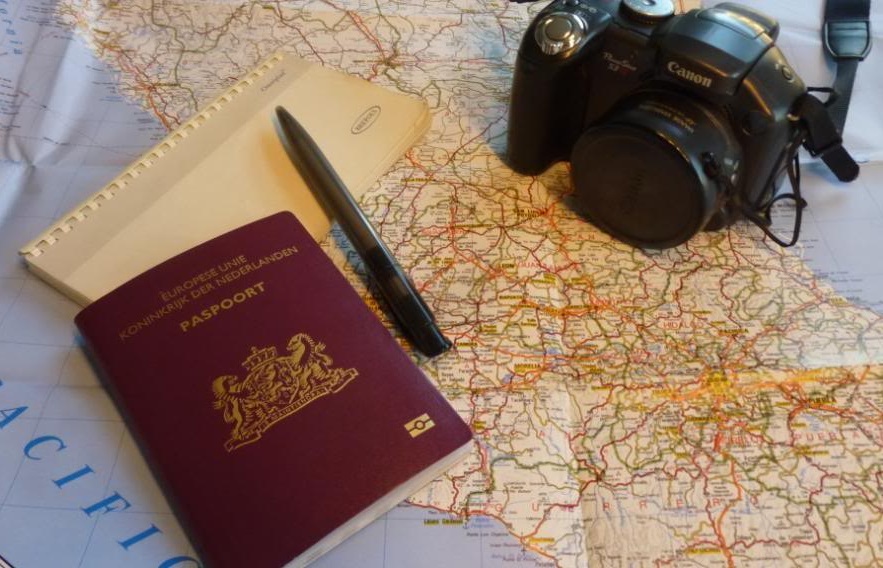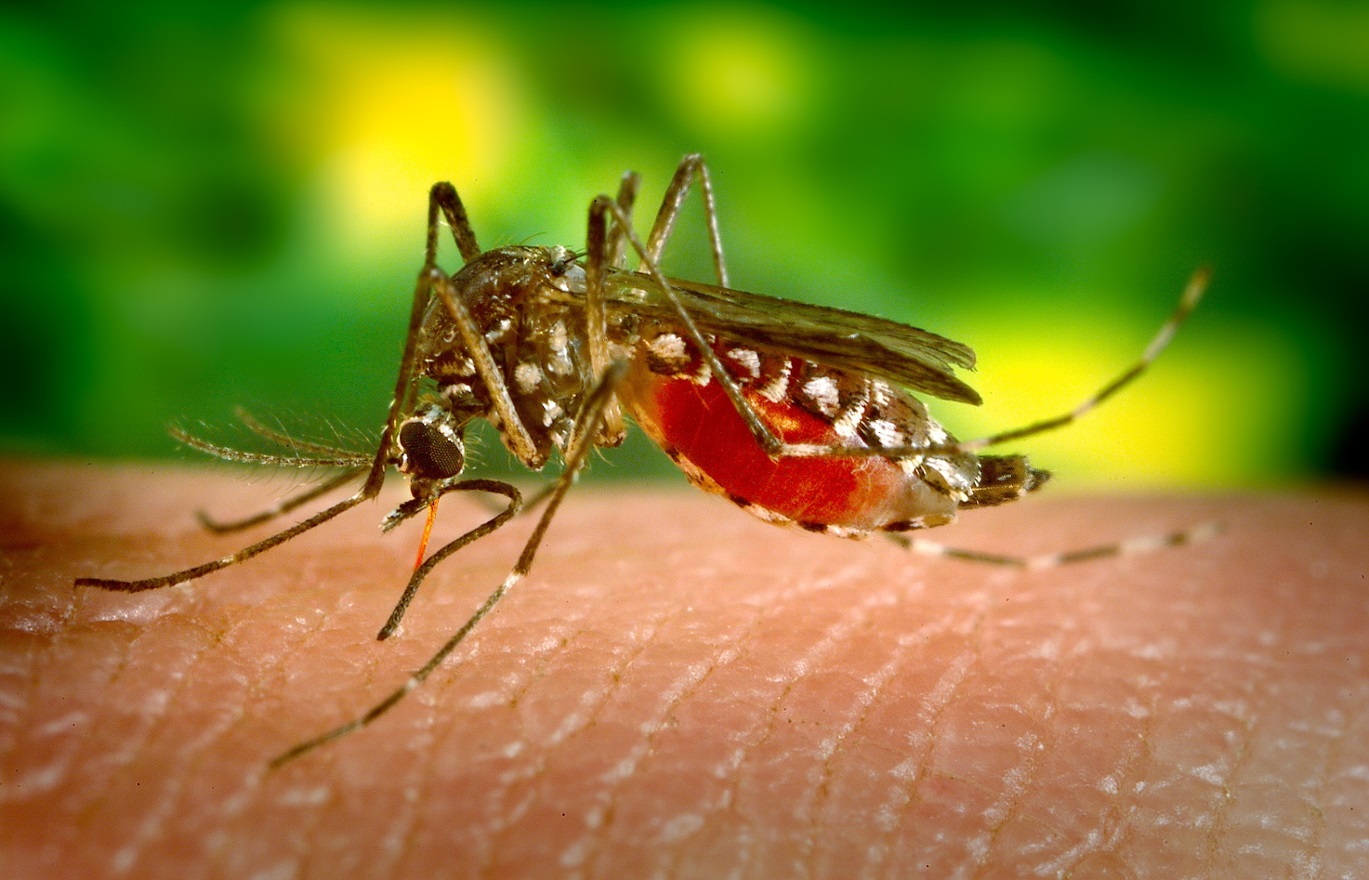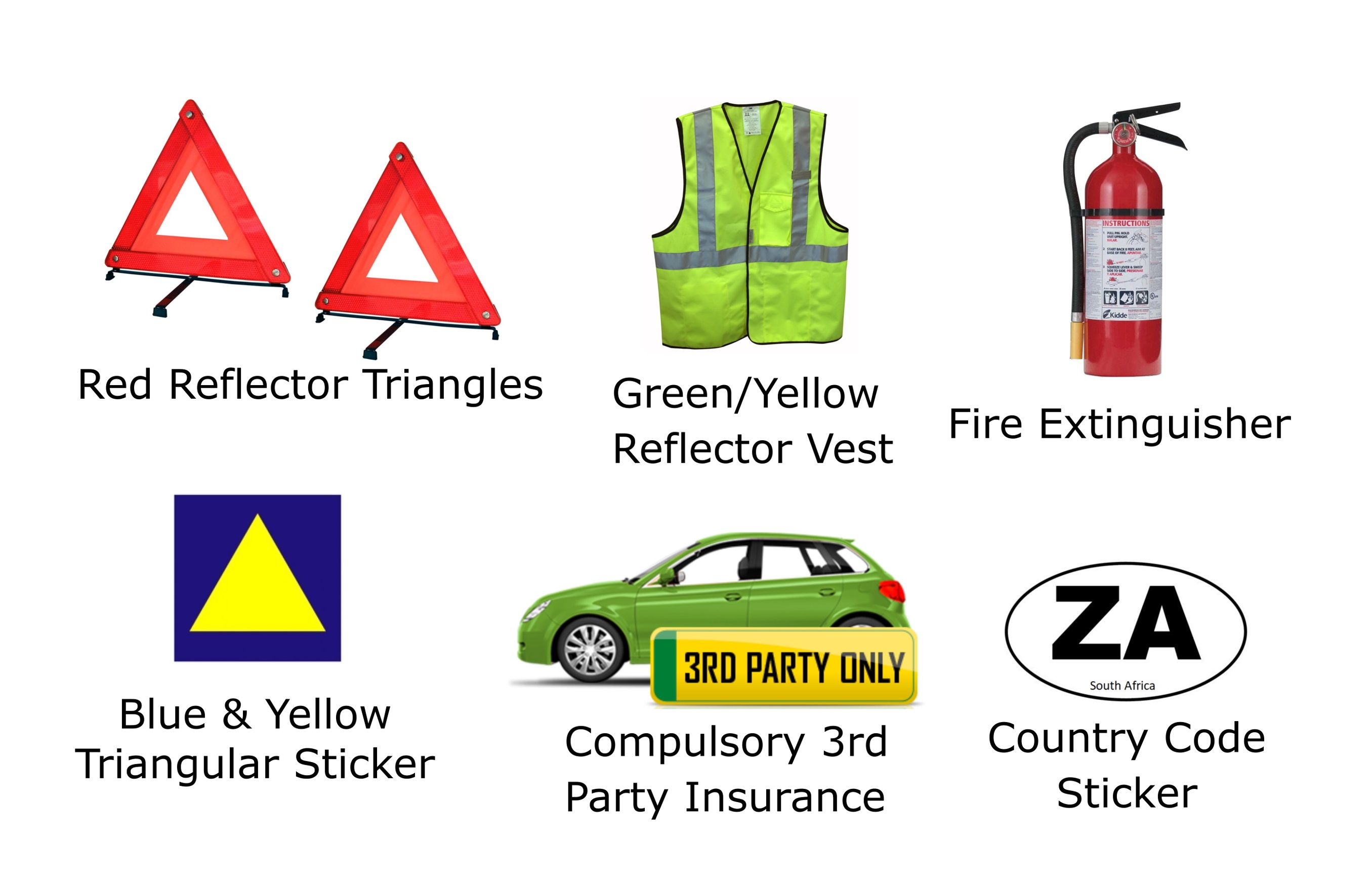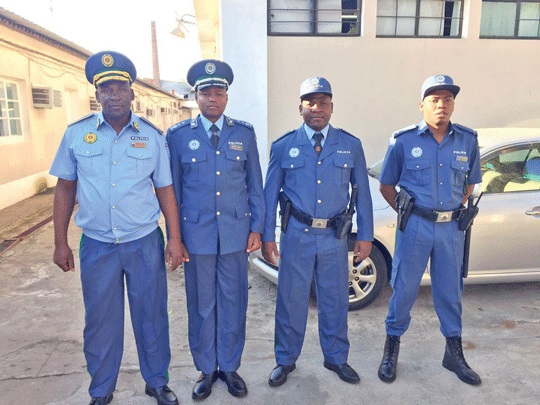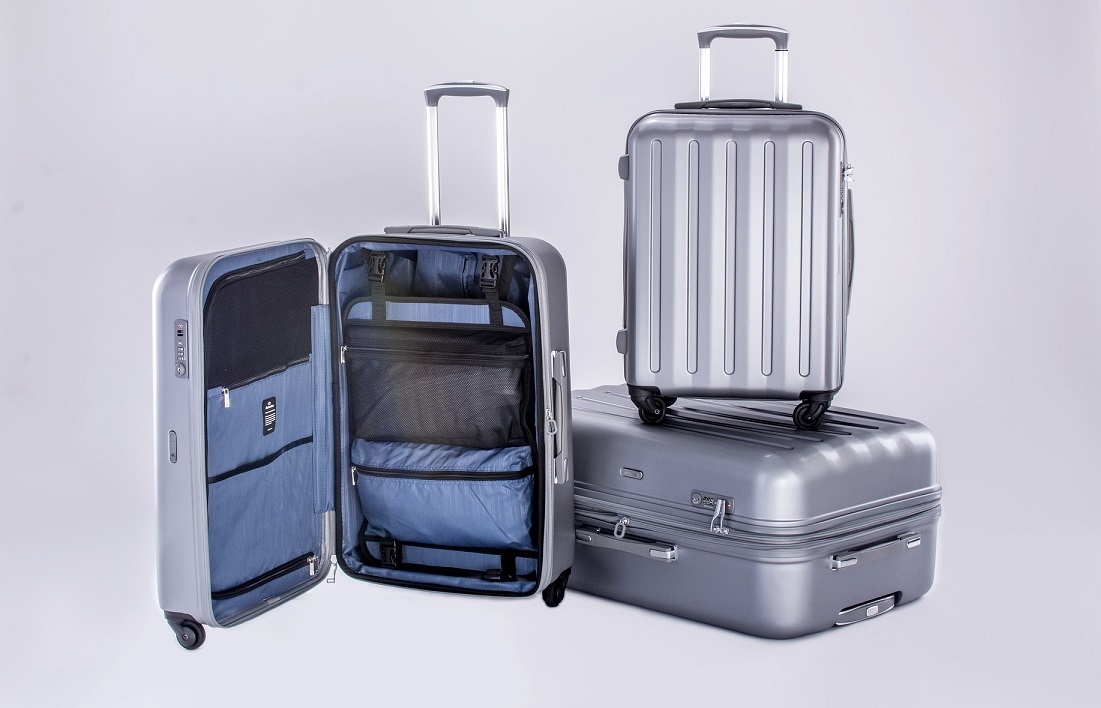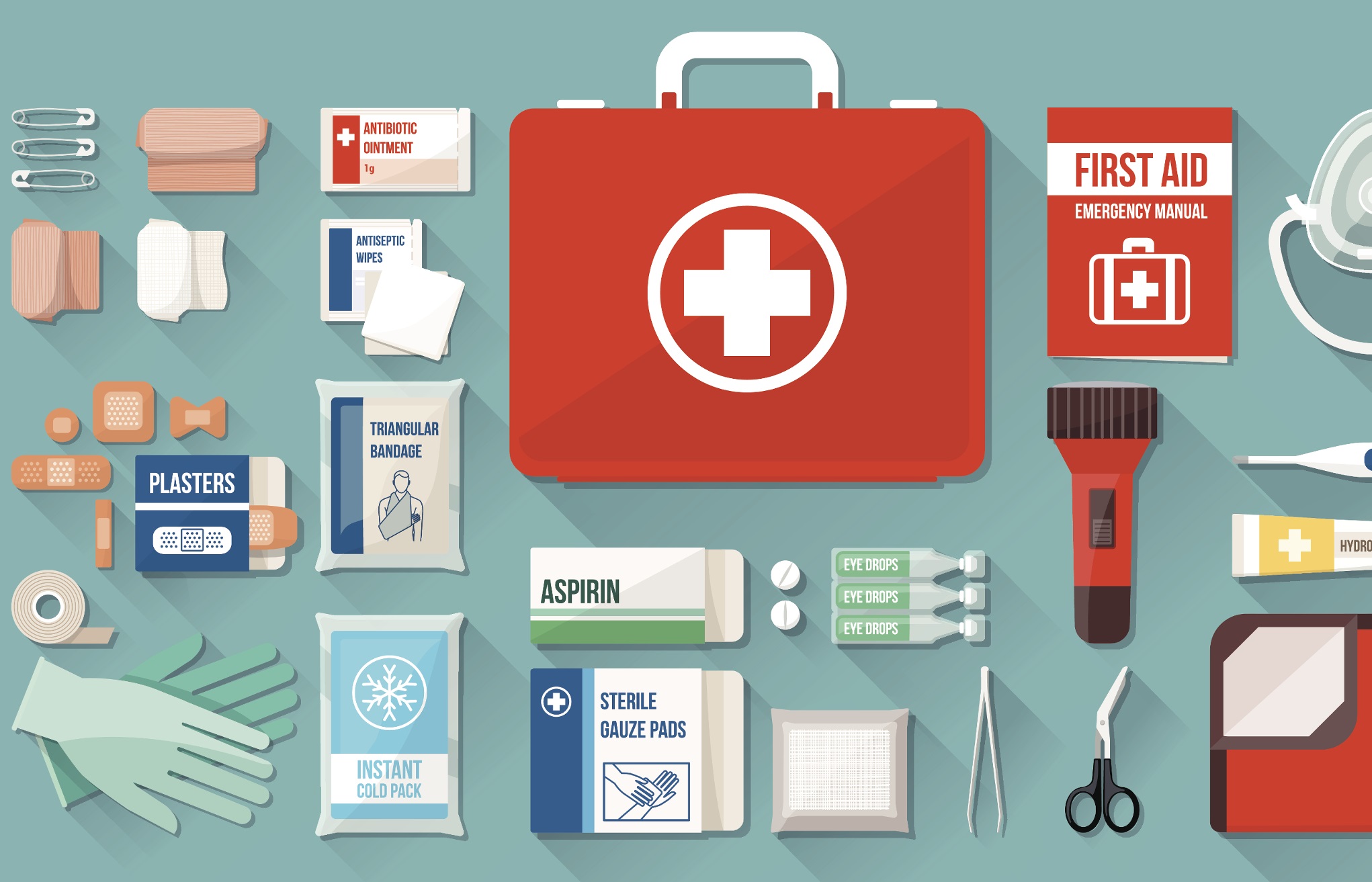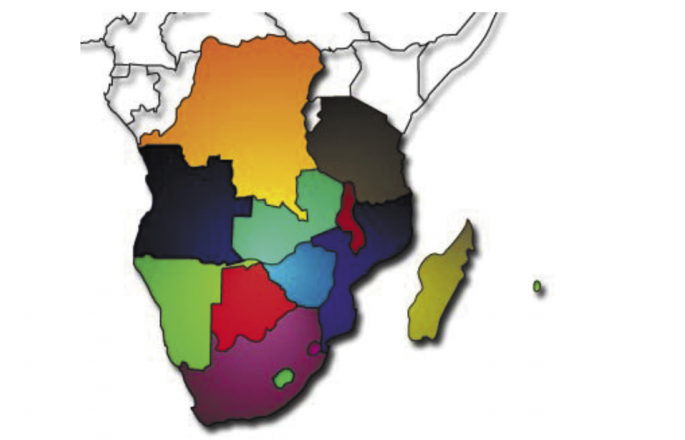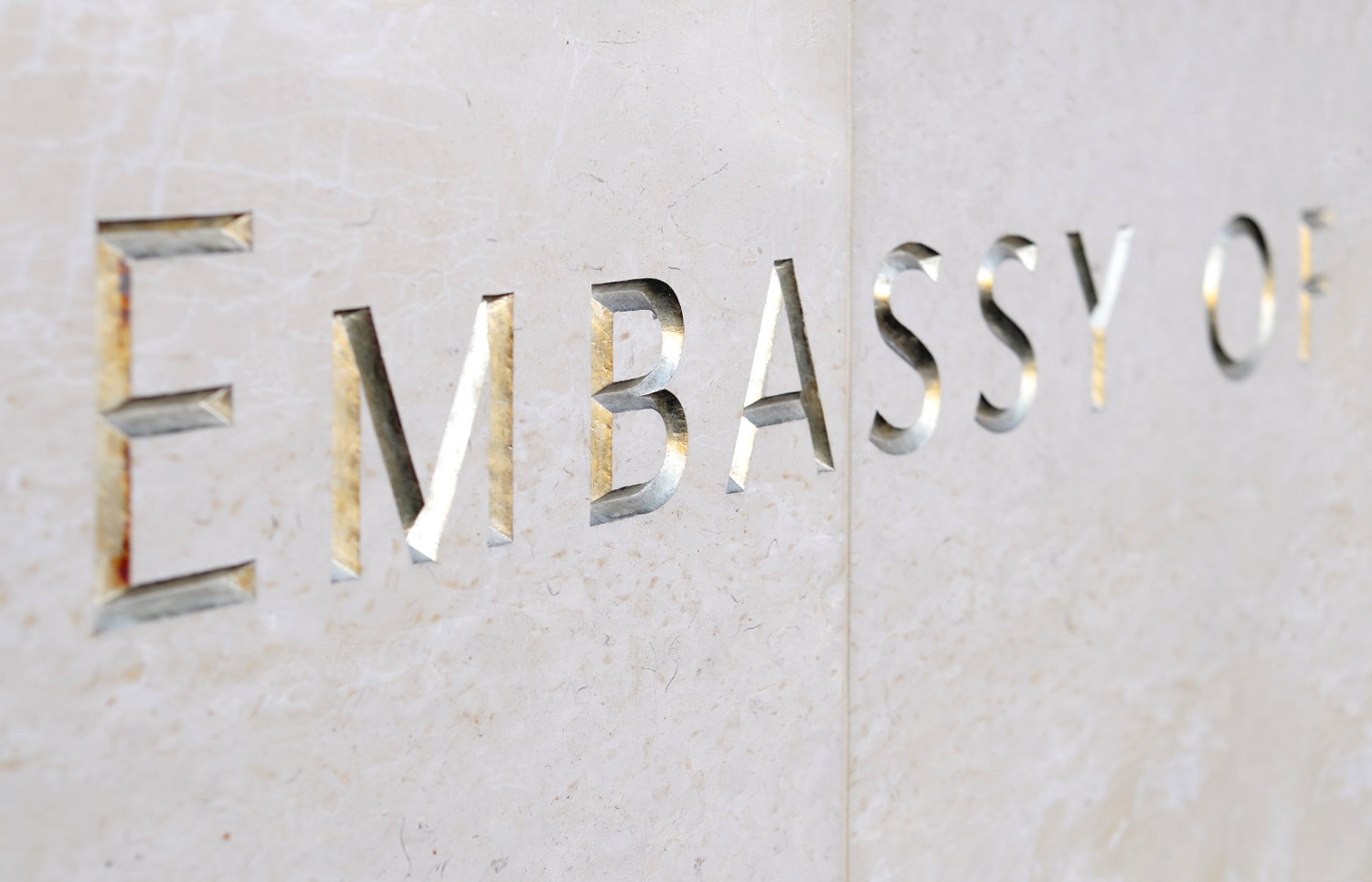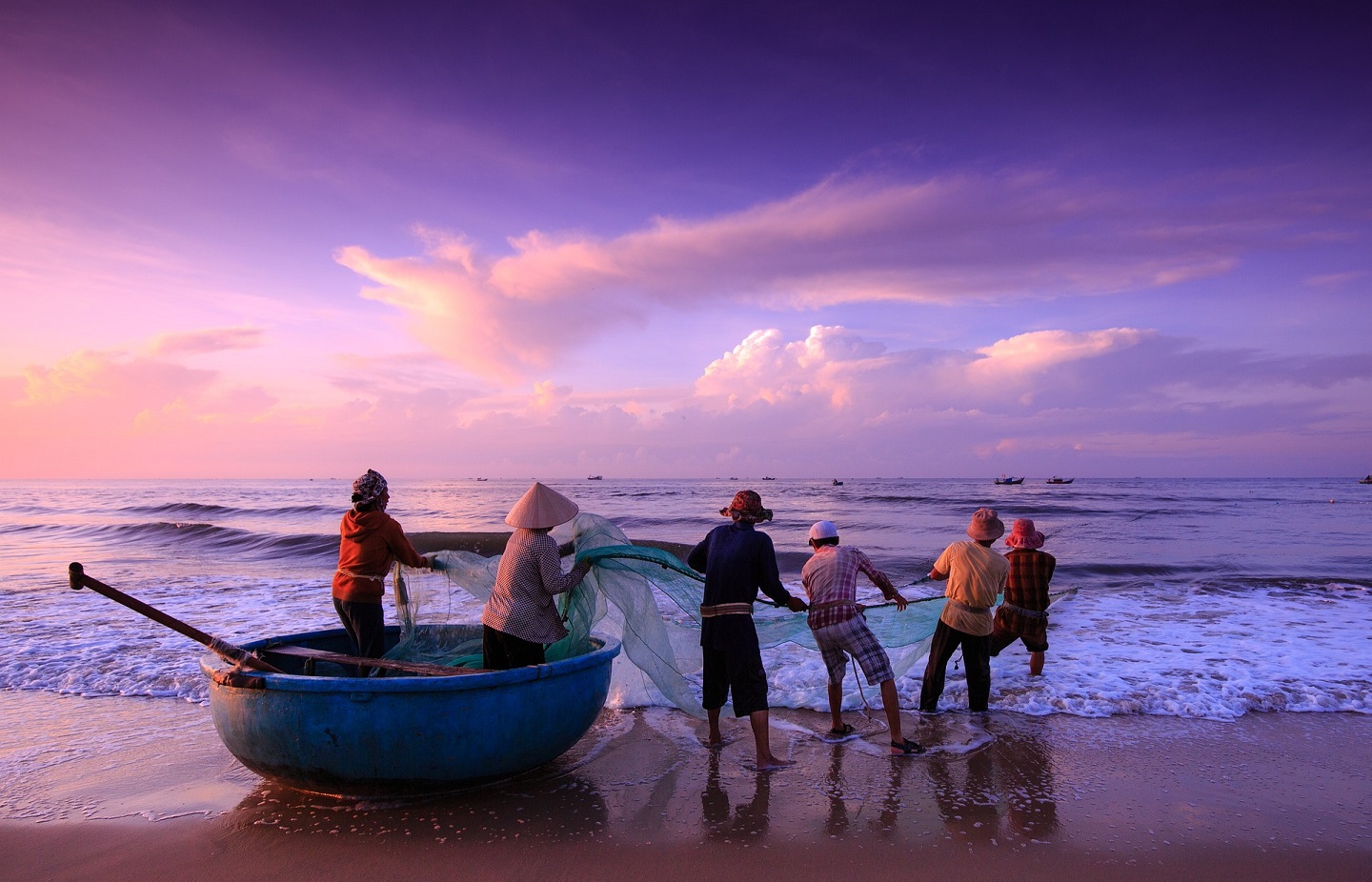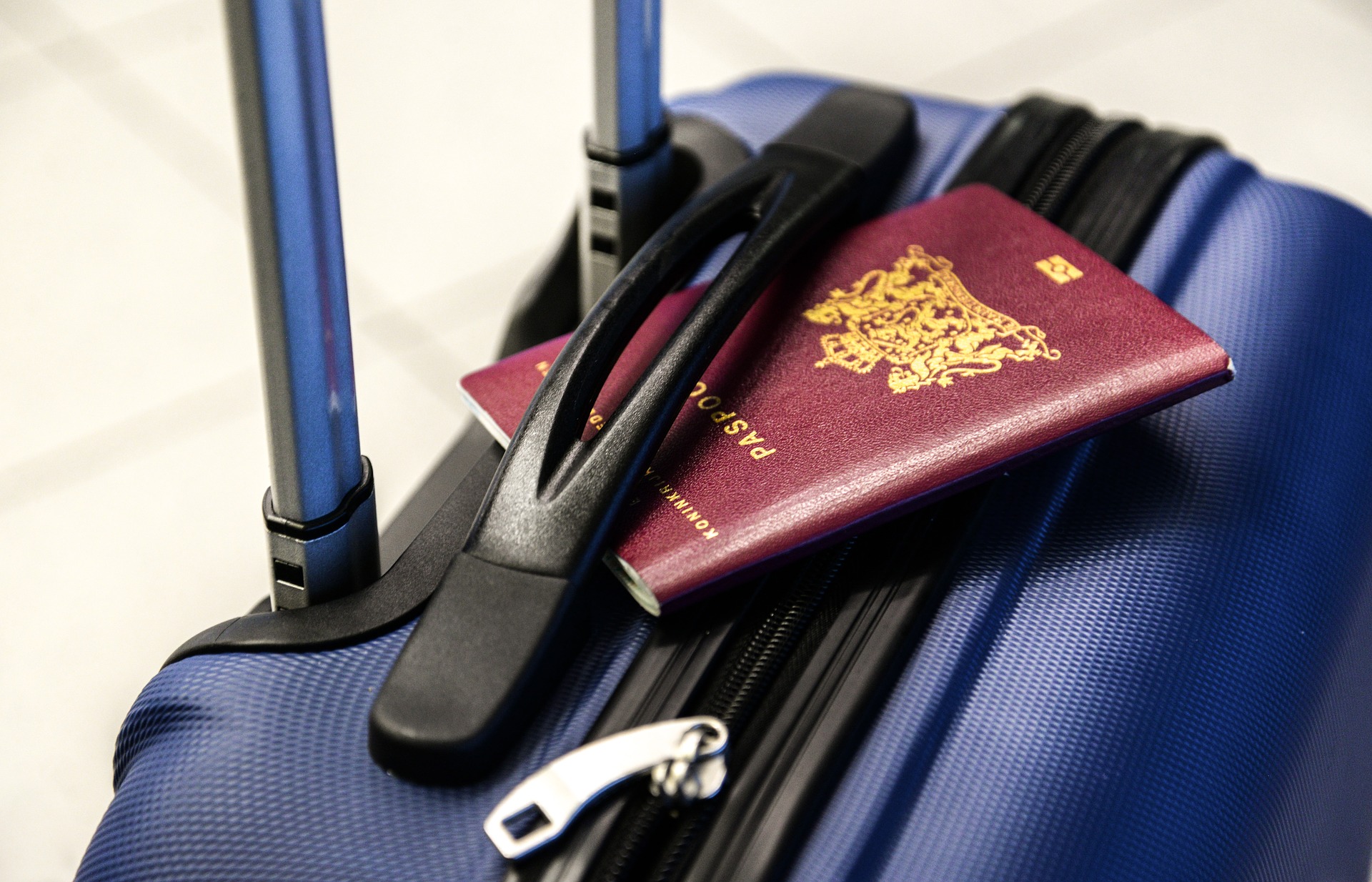All the information you need when you are Preparing to Travel to Mozambique. In addition to catering for International travelers, this guide also mentions special conditions that citizens of SADC Member States need to be aware of.
The risk of Malaria should be taken seriously when travelling to Mozambique. It is considered to be one of the most important public health problems in Mozambique and accounts for 29% percent of all deaths and 42% of deaths in children under five years old, largely because treatment was either not sought or administered too late.
Tourism Article List
For visitors who are driving to Mozambique, please ensure that your vehicle meets the following compulsory legal requirements. All the items in this list are compulsory. Your vehicle may be impounded if it does not meet all these requirements.
This document lists all border posts in Mozambique which issue visas on arrival. We will be adding the ones that are not yet equipped to issue visas soon. Travelers may require documentation to prove that they are visiting Mozambique for leisure or tourism purposes.
This document lists the items and quantities that you are allowed to bring into Mozambique duty free, what items must be declared, and what items you are required to pay duty on. It also lists items that are prohibited in Mozambique.
This document lists the items and quantities that you are allowed to bring into Mozambique duty free, what items must be declared, and what items you are required to pay duty on. It also lists items that are prohibited in Mozambique.
Mozambique.co.mz recommends that you pack a basic first aid kit. Remember that some areas in Mozambique are still very remote and you might not be able to find some of the items in this list. Having these items handy will make your visit in Mozambique more comfortable if a minor emergency arises.
The following countries are members of the SADC bloc. Citizens from these countries do not require a visa to visit Mozambique provided that the visit is not for the purpose of work and that the intended visit does not exceed 30 days.
This document lists the contact details for Mozambique Embassies in various countries around the world. Mozambique has recently changed it's immigration regulations. Visitors who require visas to enter Mozambique can now get a visitors visa on arrival at these designated border posts if their visit does not exceed 30 days.
This document lists the rules and regulations for visitors who visit the beach. It also lists requirements that boat owners need to adhere to. In addition to this, fishing regulations, along with lists of safe, restricted and prohibited fish that anglers can catch in Mozambique.
We have made a note of some of the most essential items that you should bring with you when travelling to Mozambique. Use our suggestions for ideas or as a reminder. In addition to that, seriously consider packing a basic First Aid Kit that consists of some of the most essential items.
Mozambique is a high-risk malaria area. Malaria is endemic in Mozambique. Transmission occurs all year-round but there is a seasonal peak in the rainy season from December to April. Not only is Malaria extremely debilitating, it can also be fatal.
It is considered to be one of the most important public health problems in Mozambique and accounts for 29% percent of all deaths and 42% of deaths in children under five years old, largely because treatment was either not sought or administered too late.
Out of a population of approximately 25.7 million it was estimated that nearly 5.5 million cases of malaria were diagnosed in 2014 and over 3,000 people lost their lives to the disease.
The risk of Malaria should be taken seriously when travelling to Mozambique.
The province worst hit by malaria is Zambezia, where 55.2 per cent of the entire population were infected by the malaria parasite in 2014. It was followed by the northern provinces of Cabo Delgado (43.7 per cent) and Nampula (42.2 per cent).
The south of the county is the area least affected by the disease. In Gaza province, 12.6 per cent of the population were infected, in Maputo province 4.8 per cent, and in Maputo City 2.5 per cent.
Back To Top
Perhaps the most common questions is whether to take Prophylaxis (malaria prevention medication) or not. Opinions vary widely on this subject: Note that this is a personal choice, however, we will give you further information so that you make a better informed decision. Regardless of your decision, please also ensure that you use the suggested Preventative Measures noted further down.
• Prophylaxis will reduce the risk of fatality, including the risk of contracting cerebral malaria, and may make treatment easier.
• Prophylaxis may reduce your chance of getting malaria, but you still have a high chance of contracting the disease.
• Prophylaxis may reduce the severity of an infection if you do get malaria.
• Malaria prophylaxis will not prevent you from getting malaria, but may reduce the chances.
• Many longtime residents in Mozambique will advise you against taking prophylaxis because they claim it affects diagnosis and detection of malaria (ie, always give a positive result). Most doctors, however, argue that this is not true.
• Some prophylaxis medications are not safe if you plan to go deep sea diving - check with your doctor and make sure that you get one that is safe if you are planning this activity.
• Most prophylaxis medications have side effects that include: diarrhea, anorexia, bad or vivid dreams, headache, changes in sleep, hallucinations, and vomiting among others.
• Most antimalarial prophylaxis take time to become effective. You may need to start taking medication 4-6 weeks before you travel. Ask your doctor about this if you will be taking an antimalarial medication.
• Prophylaxis courses usually also need to be continued for some period of time after you return from your trip. Ask your doctor about this.
• Prophylaxis may have a damaging effect on your liver.
• It’s been noted that some strains of malaria are becoming resistant to some prophylaxis medications.
Mozambique.co.mz recommends that travellers to Mozambique avoid prophlaxis and rather buy a Malaria treatment course in Mozambique and take it back with you. If you do get Malaria after you return take the treatment immediately.
Back To Top
Malaria carrying mosquitos usually start feeding about an hour before sunset (dusk) and mosquito activity continues through the night until about an hour after sunrise (dawn). (About 5:00pm - 6:00am) Prevention should be a top priority. The best prevention for malaria is to avoid getting bitten by mosquitos. Below are some guidelines to achieve this:
• The heat in Mozambique makes it uncomfortable to wear long sleeve shirts, trousers, socks and shoes, however, covering up as much of your body as you can is an extremely effective preventative measure. It’s estimated that up to 90% of mosquito bites occur below the knees.
• Apply sprays, creams, and repellants to exposed areas of your body. Note that some of these simply mask your body scent and don’t actually kill mosquitos when they land on you. Others have a strong smell that repels mosquitos so that they don’t want to land on you. Repeat every four hours or as indicated on the product’s label. Tabbard and Peaceful Sleep work well in Mozambique.
• If possible, stay indoors from dawn until dusk, when mosquitos are active.
• If possible, make sure your accommodation is mosquito proof: mosquito gauze on the doors and windows, mosquito nets over the bed. To help further, spray rooms with insecticides a few hours before you go to sleep. Cover any food and cooking utensils. Do not open windows while spraying, and allow vapour to settle for a few hours before returning to the room. Remember to keep doors and windows closed to prevent mosquitos from re-entering.
• Make sure mosquito nets do not have any holes or gaps, and that they are treated in Permacot / Peripel insect repellent / insecticide. Also be sure to tuck them under the mattress.
• Burning mosquito coils or citronella candles under the table when you are outdoors may help to repel mosquitos. If you can handle the smoke / smell, burning them indoors also helps - though most people find mosquito coils unpleasant and some lodges may not allow them to be burnt indoors.
• Some people argue that air-conditioning units or fans help: the moving air hinders a mosquitos flight. According to a pamphlet distributed by Schlumberger (a multi-national company in the oil and gas industry) the malaria parasite cannot be transmitted in temperatures below 22*C. They advise their staff members to keep their rooms cooled. At the time of writing no research could be found to verify this claim.
• Some travelers have reported being bitten by mosquitos while standing in queues at the border. Ensure that you are properly covered up, and have applied repellents when entering. This is often overlooked.
Back To Top
Although there are a several species of mosquito that feed on blood, only the female anopheles mosquito carries and transmits malaria. (The male anopheles is harmless.) Other species do not carry malaria, however, some other species carry parasites that cause other infections such as the dengue virus, chikungunya, West Nile Virus and a few others. There have been no cases of the Zika virus and some of the other viruses carried by mosquitos in Mozambique. However, the point is that you should avoid all mosquito bites as much as possible, not just the malaria mosquito.
The malaria mosquito (female anopheles) does not make the characteristic buzzing sound that is common for other species. You cannot hear an anopheles mosquito, and will not feel its bite. Furthermore, it does not leave a mark or the itchy feeling that is common with other species of mosquitos. This is a good and a bad thing in the sense that if you have marks or itchiness from mosquito bites, you know they are not from a malaria mosquito. It’s a bad thing in the sense that you won’t actually know if you have been bitten by a malaria mosquito.
The anopheles mosquito flies at an average of about one meter above the ground. They can’t fly in moderate to high wind. This is an advantage in Mozambique where a lot of tourist accommodation faces the beach and a steady breeze usually blows off the sea. A fan or air conditioner also helps to hinder their flight, especially if it is blowing directly over you.
Areas that are sparsely populated generally have a lower malaria risk. In contrast, areas that have pools, ponds, and other puddles of stagnant water and marsh land areas are frequented by the Anopheles Mosquito.
Back To Top
Once the malaria parasite has been transferred by the mosquito, it will take between 6 - 25 days before malaria symptoms start to show. After treatment of malaria, it can relapse within 8 - 24 weeks. There are many strains of the malaria parasite. The strains differ, depending on which area you are in.
Symptoms may vary, but generally include the following:
• Lower back pain
• Headaches
• High fever
• Nausea and possibly vomiting
• Hot sweats with profuse sweating (even in extremely cold weather)
• Hot sweats are usually followed by shivering and chills
• Pain in your muscles, lower back and joints
• Diarrhea
• Anemia
• Convulsions and possibly a coma
• Bloody stools
If you experience any of these or any flu-like symptoms after visiting a high-risk malaria area, you should seek immediate medical advice.
Back To Top
If followed correctly, malaria is extremely easy to treat. Diagnoses usually includes a simple blood test (pin prick to the finger to extract blood). These simple tests are available at most medical facilities in Mozambique. They are usually very affordable and quick - between 20 - 30 minutes. If the test result is positive, take medication prescribed by a health professional. If test results are negative, you should monitor your symptoms and stay hydrated. If the symptoms persist, take another test in 24 hours. Continue the tests until you are conclusively diagnosed with something other than malaria, or you make a spontaneous recovery, or are diagnosed with malaria, in which case you must immediately begin treatment.
Any flu-like illness starting 6 days or more after entering a malaria endemic area is to be treated as malaria until proven otherwise. If you have contracted malaria, it is important that you begin treatment as soon as possible. Most deaths from malaria result from late treatments or misdiagnosis. If in doubt, treat yourself.
At the time of writing, the best medication available in Mozambique to use for treatment is Coartem 20/120. If you can’t find this treatment, look for any other treatment that contains the following active ingredients:
Artemether 20mg
Lumefantrine 120mg
Courses may vary - please read the instructions carefully and follow them. However, generally the treatment course usually contains 24 pills. Four pills are taken in the morning, and another four taken at night for 3 days to give a total daily dosage of 80mg artemether and 480mg lumefantrine.
Be sure to read instructions on the medication. Usually the dosage above is prescribed for a person with a body weight of 80kg. Some courses may require that you take an additional pill for every 20kg of body weight over 80kg.
It is extremely important to stay in bed for the three days during the course of treatment, getting up only to go to the toilet. Drink lots of fluid (preferably water) and try to eat. Staying hydrated is extremely important.
Immediately after the malaria treatment, it is advised to start a course of antibiotics. The malaria treatment leaves your liver extremely vulnerable and open to other infections. The antibiotics will help protect your liver while it recovers.
The consumption of alcohol within a month after malaria treatment will cause irreversible damage to your liver. Alcohol consumption three months after treatment is ok, but not recommended. You can resume normal consumption 6 months after treatment.
Malaria treatments are probably one of the most common treatments in Mozambique and are very affordable. Even though Mozambique does not have many good medical facilities, the health services in any area, even the most remote areas, are very good at diagnosing and treating malaria because it’s so common. Treatments in Mozambique cost between 250 and 350 MZN (about R50 - R70 or $3.50 - 4.50 United States Dollars). The treatment can be found in almost all pharmacies in Mozambique, and usually also in very remote areas. Mozambique.co.mz recommends that you buy a course of treatment in Mozambique as soon as you arrive and take it back with you if you don’t use it. (Treatment in other countries may be much more expensive, for example South Africa sells the same course of Coartem for R700 or $50 United States Dollars)
Besides the treatment, here are a few additional measures that will help. (These recommendations will not cure malaria - you must use a prescribed treatment. They are only additional measures to make you more comfortable and help your system cope better.)
• Stay hydrated - drink lots of water.
• Wet a cloth with cold water and put it on the lymphatic areas (neck, arm pits and groin)
• Use an ice pack or wet cloth on the forehead, especially if you have a headache.
• During hot sweats, you can put your feet in a bowl of cold water to cool off.
• If you are vomiting and too weak to take enough fluids, consider small sips of ice tea, or any other herbal tea.
• Honey is good for the liver and can be taken with yoghurt.
Back To Top
Although this detailed analysis is interesting, it is optional reading. You can skip it if you want: all important information in contained above. Note also that an actual analysis is much more complex, however, the scientific details have been simplified to give you a clearer idea of the process.
The female anopheles mosquito - the malaria carrying mosquito - hunts for human or animal blood from dusk to dawn. Blood is an absolute necessity for her because it provides the protein needed for the development of her eggs. Eggs which will later be deposited in her breeding place.
She has a tiny, elegant body, measuring from 8 mm to 1 cm. She has dark spots on her wings, three pairs of long, slender legs and a prominent tubular proboscis which she uses to draw blood.
You may recognize her by the way she rests on the wall - she stands on her head with the tail-end of her body tilted upwards, protruding into the air like a rocket on a launching pad. This is characteristic, because most other species assume a position parallel to the wall.
Only she can harbor the malaria parasite that affects humans and carry it from an infected person to a new victim.
Worldwide, she infects more than 200 million people with malaria and kills an estimated 627,000 people, mostly children. Her bite is the direct cause of death for many who contract the disease during their travels.
There more than 3,500 species of mosquitoes, and about 460 Anopheles species. Approximately 100 of these anopheles species can transmit malaria parasites. Out of the approximately 50 different species of malaria parasites only 5 infect humans. The Anopheles, attracted by the warmth of your body and also by the carbon dioxide you exhale, approaches silently. She does not hum or hover as other mosquitoes do.
She lands on an exposed part of your body. From her proboscis consists of six stylets. First, two needle-pointed stylets will stab your skin, then two blades bearing very fine teeth will lacerate the skin like a microscopic saw, searching for a small vein. Soon she pierces the vessel with a flexible tube, the “food canal” through which blood is conveyed into her mouth. During the feeding, she injects a few drops of her saliva to act as a local anesthetic so that you do not feel her bite.
This is where the danger lies. Her saliva contains hundreds of malaria organisms, which have been multiplying in her intestine for two weeks, the result of having bitten a person infected with malaria.
She will feed on blood until she is loaded to twice her unfed weight with blood and then hide in a dark corner of your room. It takes forty-eight hours to digest the blood and during this time her ovaries will completely develop and she will be ready to lay her eggs.
She then leaves your house for a breeding place nearby. She can breed in almost any place where water collects - a footprint, a puddle, a tire track, even a coconut shell or a man-made container. After laying her eggs, her ovarian cycle starts again, and she may return to see you the same night after laying eggs. She lives for three months and during this life span, she may lay up to three thousand eggs.
This shuttling between blood sources and breeding place makes malaria a localized disease that is dependent upon the radius of the flight range of the Anopheles. Her flight range varies from a few hundred yards to a mile. The most dangerous species of Anopheles attacks humans between dusk and dawn with midnight to 4am being the peak time. This means you are a prime target when you are most vulnerable - sleeping.
The malaria organism is a protozoan: a microscopic, single-celled animal. It should not be with bacteria, which belong to the plant kingdom. The parasite has a complex life cycle, reproducing first in the liver, then in the red blood cells and finally in the mosquito. During these three cycles the parasite transforms itself and emerges each time with new physical and biochemical characteristics.
Malaria organisms are injected into the blood when the Anopheles bites you. They remain in the blood stream for a very short period - usually less than an hour. They disappear from circulation and establish themselves in the cells of the liver, where they commence cycles of reproduction. This reproduction cycle lasts from six to twelve days, depending on the species. This stage corresponds to the incubation period of the disease.
During this time, each parasite grows through repeated divisions of the nucleus into one large cell called a schizont, which contains thousands of tiny new parasites. The increased pressure causes the schizont to burst and release these newly formed parasites, called merozoites. They leave the liver and enter the red blood cells where they initiate cycles of reproduction.
Three of the species of the malaria parasite can only reproduce once in the liver. If you are infected by these species of malaria, suppressive medication will eliminate the parasites from the red blood cells, and because no new invasions from the liver can occur, you will be completely cured of the infection.
The other two species of the malaria parasite enter the liver as two different forms: one strain immediately starts the reproduction cycle, and the other lies dormant in the liver. The dormant parasites enter the reproduction cycle at different times. Months or years after you have meticulously followed an antimalarial regimen you can get malaria again without being bitten - this is the common relapse. Once the parasites leave the liver, they enter the bloodstream and penetrate the red blood cells, where they multiply in cycles. When the infected red blood cells burst, the parasites flood the circulation system and invade more red blood cells to start the cycle of reproduction again.
These cycles repeat themselves every two to three days depending on the species. The rhythmic release of so many parasites into the circulation - estimated at a quarter of a billion - coincides with the characteristic clinical picture of malaria: periodic high fever, preceded by shivering and followed by profuse sweating.
Malaria parasites can only mature outside the human body, and because they cannot leave the bloodstream on their own, they need outside help - the Anopheles mosquito. Therein lies the symbiotic relationship: the Anopheles mosquito requires blood for the protein she needs to lay her eggs and the parasite requires a host in which it can reproduce, mature and be transported to another victim.
When the Anopheles bites an infected person, the parasites are drawn from the bloodstream. Some of them mature and then migrate to the mosquito's salivary glands, waiting to be injected into the next victim. The endless cycle starts all over again.
To fully understand malaria transmission in a particular area, you need to take into consideration the behavior of the local species of Anopheles. The knowledge of her habits will give you a better chance to protect yourself against her bite.
The different species have different habits. For example, the mosquito responsible for so many deaths in Africa (south of the Sahara), chooses a breeding place a few yards from your home. She may even travel with you by car, plane, or boat. In fact, she once crossed the Atlantic by boat, and spread malaria along the northeastern cost of Brazil. On the other hand, the mosquito responsible for malaria in the Philippines has different habits. She prefers to breed along the margins of foothill streams and lakes, and her presence is confined to rural areas. These two examples explain why there is no malaria in large cities like Manila, and yet malaria can be found in African cities (south of the Sahara)
Two other factors influence the reproduction of the Anopheles: Rainfall and Temperature. The rainy season causes more areas for the anopheles to breed in, which in turn brings an increase in the anopheline population. It’s during this time that the annual high-risk period of malaria transmission is determined. Lower temperatures will decrease the Anopheles populations and more importantly, will hamper the development of parasites in the mosquito’s body. Since temperature lowers with increased altitude, transmission of the disease is not possible over a certain height above sea level.
The anopheles mosquito has developed a resistance to many insecticides and chemicals that were previously used to kill her. Because of this, malaria is making a comeback in areas where the infection was reduced or eliminated.
Back To Top
It is considered to be one of the most important public health problems in Mozambique and accounts for 29% percent of all deaths and 42% of deaths in children under five years old, largely because treatment was either not sought or administered too late.
Out of a population of approximately 25.7 million it was estimated that nearly 5.5 million cases of malaria were diagnosed in 2014 and over 3,000 people lost their lives to the disease.
The risk of Malaria should be taken seriously when travelling to Mozambique.
The province worst hit by malaria is Zambezia, where 55.2 per cent of the entire population were infected by the malaria parasite in 2014. It was followed by the northern provinces of Cabo Delgado (43.7 per cent) and Nampula (42.2 per cent).
The south of the county is the area least affected by the disease. In Gaza province, 12.6 per cent of the population were infected, in Maputo province 4.8 per cent, and in Maputo City 2.5 per cent.
Back To Top
Perhaps the most common questions is whether to take Prophylaxis (malaria prevention medication) or not. Opinions vary widely on this subject: Note that this is a personal choice, however, we will give you further information so that you make a better informed decision. Regardless of your decision, please also ensure that you use the suggested Preventative Measures noted further down.
• Prophylaxis will reduce the risk of fatality, including the risk of contracting cerebral malaria, and may make treatment easier.
• Prophylaxis may reduce your chance of getting malaria, but you still have a high chance of contracting the disease.
• Prophylaxis may reduce the severity of an infection if you do get malaria.
• Malaria prophylaxis will not prevent you from getting malaria, but may reduce the chances.
• Many longtime residents in Mozambique will advise you against taking prophylaxis because they claim it affects diagnosis and detection of malaria (ie, always give a positive result). Most doctors, however, argue that this is not true.
• Some prophylaxis medications are not safe if you plan to go deep sea diving - check with your doctor and make sure that you get one that is safe if you are planning this activity.
• Most prophylaxis medications have side effects that include: diarrhea, anorexia, bad or vivid dreams, headache, changes in sleep, hallucinations, and vomiting among others.
• Most antimalarial prophylaxis take time to become effective. You may need to start taking medication 4-6 weeks before you travel. Ask your doctor about this if you will be taking an antimalarial medication.
• Prophylaxis courses usually also need to be continued for some period of time after you return from your trip. Ask your doctor about this.
• Prophylaxis may have a damaging effect on your liver.
• It’s been noted that some strains of malaria are becoming resistant to some prophylaxis medications.
Mozambique.co.mz recommends that travellers to Mozambique avoid prophlaxis and rather buy a Malaria treatment course in Mozambique and take it back with you. If you do get Malaria after you return take the treatment immediately.
Back To Top
Malaria carrying mosquitos usually start feeding about an hour before sunset (dusk) and mosquito activity continues through the night until about an hour after sunrise (dawn). (About 5:00pm - 6:00am) Prevention should be a top priority. The best prevention for malaria is to avoid getting bitten by mosquitos. Below are some guidelines to achieve this:
• The heat in Mozambique makes it uncomfortable to wear long sleeve shirts, trousers, socks and shoes, however, covering up as much of your body as you can is an extremely effective preventative measure. It’s estimated that up to 90% of mosquito bites occur below the knees.
• Apply sprays, creams, and repellants to exposed areas of your body. Note that some of these simply mask your body scent and don’t actually kill mosquitos when they land on you. Others have a strong smell that repels mosquitos so that they don’t want to land on you. Repeat every four hours or as indicated on the product’s label. Tabbard and Peaceful Sleep work well in Mozambique.
• If possible, stay indoors from dawn until dusk, when mosquitos are active.
• If possible, make sure your accommodation is mosquito proof: mosquito gauze on the doors and windows, mosquito nets over the bed. To help further, spray rooms with insecticides a few hours before you go to sleep. Cover any food and cooking utensils. Do not open windows while spraying, and allow vapour to settle for a few hours before returning to the room. Remember to keep doors and windows closed to prevent mosquitos from re-entering.
• Make sure mosquito nets do not have any holes or gaps, and that they are treated in Permacot / Peripel insect repellent / insecticide. Also be sure to tuck them under the mattress.
• Burning mosquito coils or citronella candles under the table when you are outdoors may help to repel mosquitos. If you can handle the smoke / smell, burning them indoors also helps - though most people find mosquito coils unpleasant and some lodges may not allow them to be burnt indoors.
• Some people argue that air-conditioning units or fans help: the moving air hinders a mosquitos flight. According to a pamphlet distributed by Schlumberger (a multi-national company in the oil and gas industry) the malaria parasite cannot be transmitted in temperatures below 22*C. They advise their staff members to keep their rooms cooled. At the time of writing no research could be found to verify this claim.
• Some travelers have reported being bitten by mosquitos while standing in queues at the border. Ensure that you are properly covered up, and have applied repellents when entering. This is often overlooked.
Back To Top
Although there are a several species of mosquito that feed on blood, only the female anopheles mosquito carries and transmits malaria. (The male anopheles is harmless.) Other species do not carry malaria, however, some other species carry parasites that cause other infections such as the dengue virus, chikungunya, West Nile Virus and a few others. There have been no cases of the Zika virus and some of the other viruses carried by mosquitos in Mozambique. However, the point is that you should avoid all mosquito bites as much as possible, not just the malaria mosquito.
The malaria mosquito (female anopheles) does not make the characteristic buzzing sound that is common for other species. You cannot hear an anopheles mosquito, and will not feel its bite. Furthermore, it does not leave a mark or the itchy feeling that is common with other species of mosquitos. This is a good and a bad thing in the sense that if you have marks or itchiness from mosquito bites, you know they are not from a malaria mosquito. It’s a bad thing in the sense that you won’t actually know if you have been bitten by a malaria mosquito.
The anopheles mosquito flies at an average of about one meter above the ground. They can’t fly in moderate to high wind. This is an advantage in Mozambique where a lot of tourist accommodation faces the beach and a steady breeze usually blows off the sea. A fan or air conditioner also helps to hinder their flight, especially if it is blowing directly over you.
Areas that are sparsely populated generally have a lower malaria risk. In contrast, areas that have pools, ponds, and other puddles of stagnant water and marsh land areas are frequented by the Anopheles Mosquito.
Back To Top
Once the malaria parasite has been transferred by the mosquito, it will take between 6 - 25 days before malaria symptoms start to show. After treatment of malaria, it can relapse within 8 - 24 weeks. There are many strains of the malaria parasite. The strains differ, depending on which area you are in.
Symptoms may vary, but generally include the following:
• Lower back pain
• Headaches
• High fever
• Nausea and possibly vomiting
• Hot sweats with profuse sweating (even in extremely cold weather)
• Hot sweats are usually followed by shivering and chills
• Pain in your muscles, lower back and joints
• Diarrhea
• Anemia
• Convulsions and possibly a coma
• Bloody stools
If you experience any of these or any flu-like symptoms after visiting a high-risk malaria area, you should seek immediate medical advice.
Back To Top
If followed correctly, malaria is extremely easy to treat. Diagnoses usually includes a simple blood test (pin prick to the finger to extract blood). These simple tests are available at most medical facilities in Mozambique. They are usually very affordable and quick - between 20 - 30 minutes. If the test result is positive, take medication prescribed by a health professional. If test results are negative, you should monitor your symptoms and stay hydrated. If the symptoms persist, take another test in 24 hours. Continue the tests until you are conclusively diagnosed with something other than malaria, or you make a spontaneous recovery, or are diagnosed with malaria, in which case you must immediately begin treatment.
Any flu-like illness starting 6 days or more after entering a malaria endemic area is to be treated as malaria until proven otherwise. If you have contracted malaria, it is important that you begin treatment as soon as possible. Most deaths from malaria result from late treatments or misdiagnosis. If in doubt, treat yourself.
At the time of writing, the best medication available in Mozambique to use for treatment is Coartem 20/120. If you can’t find this treatment, look for any other treatment that contains the following active ingredients:
Artemether 20mg
Lumefantrine 120mg
Courses may vary - please read the instructions carefully and follow them. However, generally the treatment course usually contains 24 pills. Four pills are taken in the morning, and another four taken at night for 3 days to give a total daily dosage of 80mg artemether and 480mg lumefantrine.
Be sure to read instructions on the medication. Usually the dosage above is prescribed for a person with a body weight of 80kg. Some courses may require that you take an additional pill for every 20kg of body weight over 80kg.
It is extremely important to stay in bed for the three days during the course of treatment, getting up only to go to the toilet. Drink lots of fluid (preferably water) and try to eat. Staying hydrated is extremely important.
Immediately after the malaria treatment, it is advised to start a course of antibiotics. The malaria treatment leaves your liver extremely vulnerable and open to other infections. The antibiotics will help protect your liver while it recovers.
The consumption of alcohol within a month after malaria treatment will cause irreversible damage to your liver. Alcohol consumption three months after treatment is ok, but not recommended. You can resume normal consumption 6 months after treatment.
Malaria treatments are probably one of the most common treatments in Mozambique and are very affordable. Even though Mozambique does not have many good medical facilities, the health services in any area, even the most remote areas, are very good at diagnosing and treating malaria because it’s so common. Treatments in Mozambique cost between 250 and 350 MZN (about R50 - R70 or $3.50 - 4.50 United States Dollars). The treatment can be found in almost all pharmacies in Mozambique, and usually also in very remote areas. Mozambique.co.mz recommends that you buy a course of treatment in Mozambique as soon as you arrive and take it back with you if you don’t use it. (Treatment in other countries may be much more expensive, for example South Africa sells the same course of Coartem for R700 or $50 United States Dollars)
Besides the treatment, here are a few additional measures that will help. (These recommendations will not cure malaria - you must use a prescribed treatment. They are only additional measures to make you more comfortable and help your system cope better.)
• Stay hydrated - drink lots of water.
• Wet a cloth with cold water and put it on the lymphatic areas (neck, arm pits and groin)
• Use an ice pack or wet cloth on the forehead, especially if you have a headache.
• During hot sweats, you can put your feet in a bowl of cold water to cool off.
• If you are vomiting and too weak to take enough fluids, consider small sips of ice tea, or any other herbal tea.
• Honey is good for the liver and can be taken with yoghurt.
Back To Top
Although this detailed analysis is interesting, it is optional reading. You can skip it if you want: all important information in contained above. Note also that an actual analysis is much more complex, however, the scientific details have been simplified to give you a clearer idea of the process.
The female anopheles mosquito - the malaria carrying mosquito - hunts for human or animal blood from dusk to dawn. Blood is an absolute necessity for her because it provides the protein needed for the development of her eggs. Eggs which will later be deposited in her breeding place.
She has a tiny, elegant body, measuring from 8 mm to 1 cm. She has dark spots on her wings, three pairs of long, slender legs and a prominent tubular proboscis which she uses to draw blood.
You may recognize her by the way she rests on the wall - she stands on her head with the tail-end of her body tilted upwards, protruding into the air like a rocket on a launching pad. This is characteristic, because most other species assume a position parallel to the wall.
Only she can harbor the malaria parasite that affects humans and carry it from an infected person to a new victim.
Worldwide, she infects more than 200 million people with malaria and kills an estimated 627,000 people, mostly children. Her bite is the direct cause of death for many who contract the disease during their travels.
There more than 3,500 species of mosquitoes, and about 460 Anopheles species. Approximately 100 of these anopheles species can transmit malaria parasites. Out of the approximately 50 different species of malaria parasites only 5 infect humans. The Anopheles, attracted by the warmth of your body and also by the carbon dioxide you exhale, approaches silently. She does not hum or hover as other mosquitoes do.
She lands on an exposed part of your body. From her proboscis consists of six stylets. First, two needle-pointed stylets will stab your skin, then two blades bearing very fine teeth will lacerate the skin like a microscopic saw, searching for a small vein. Soon she pierces the vessel with a flexible tube, the “food canal” through which blood is conveyed into her mouth. During the feeding, she injects a few drops of her saliva to act as a local anesthetic so that you do not feel her bite.
This is where the danger lies. Her saliva contains hundreds of malaria organisms, which have been multiplying in her intestine for two weeks, the result of having bitten a person infected with malaria.
She will feed on blood until she is loaded to twice her unfed weight with blood and then hide in a dark corner of your room. It takes forty-eight hours to digest the blood and during this time her ovaries will completely develop and she will be ready to lay her eggs.
She then leaves your house for a breeding place nearby. She can breed in almost any place where water collects - a footprint, a puddle, a tire track, even a coconut shell or a man-made container. After laying her eggs, her ovarian cycle starts again, and she may return to see you the same night after laying eggs. She lives for three months and during this life span, she may lay up to three thousand eggs.
This shuttling between blood sources and breeding place makes malaria a localized disease that is dependent upon the radius of the flight range of the Anopheles. Her flight range varies from a few hundred yards to a mile. The most dangerous species of Anopheles attacks humans between dusk and dawn with midnight to 4am being the peak time. This means you are a prime target when you are most vulnerable - sleeping.
The malaria organism is a protozoan: a microscopic, single-celled animal. It should not be with bacteria, which belong to the plant kingdom. The parasite has a complex life cycle, reproducing first in the liver, then in the red blood cells and finally in the mosquito. During these three cycles the parasite transforms itself and emerges each time with new physical and biochemical characteristics.
Malaria organisms are injected into the blood when the Anopheles bites you. They remain in the blood stream for a very short period - usually less than an hour. They disappear from circulation and establish themselves in the cells of the liver, where they commence cycles of reproduction. This reproduction cycle lasts from six to twelve days, depending on the species. This stage corresponds to the incubation period of the disease.
During this time, each parasite grows through repeated divisions of the nucleus into one large cell called a schizont, which contains thousands of tiny new parasites. The increased pressure causes the schizont to burst and release these newly formed parasites, called merozoites. They leave the liver and enter the red blood cells where they initiate cycles of reproduction.
Three of the species of the malaria parasite can only reproduce once in the liver. If you are infected by these species of malaria, suppressive medication will eliminate the parasites from the red blood cells, and because no new invasions from the liver can occur, you will be completely cured of the infection.
The other two species of the malaria parasite enter the liver as two different forms: one strain immediately starts the reproduction cycle, and the other lies dormant in the liver. The dormant parasites enter the reproduction cycle at different times. Months or years after you have meticulously followed an antimalarial regimen you can get malaria again without being bitten - this is the common relapse. Once the parasites leave the liver, they enter the bloodstream and penetrate the red blood cells, where they multiply in cycles. When the infected red blood cells burst, the parasites flood the circulation system and invade more red blood cells to start the cycle of reproduction again.
These cycles repeat themselves every two to three days depending on the species. The rhythmic release of so many parasites into the circulation - estimated at a quarter of a billion - coincides with the characteristic clinical picture of malaria: periodic high fever, preceded by shivering and followed by profuse sweating.
Malaria parasites can only mature outside the human body, and because they cannot leave the bloodstream on their own, they need outside help - the Anopheles mosquito. Therein lies the symbiotic relationship: the Anopheles mosquito requires blood for the protein she needs to lay her eggs and the parasite requires a host in which it can reproduce, mature and be transported to another victim.
When the Anopheles bites an infected person, the parasites are drawn from the bloodstream. Some of them mature and then migrate to the mosquito's salivary glands, waiting to be injected into the next victim. The endless cycle starts all over again.
To fully understand malaria transmission in a particular area, you need to take into consideration the behavior of the local species of Anopheles. The knowledge of her habits will give you a better chance to protect yourself against her bite.
The different species have different habits. For example, the mosquito responsible for so many deaths in Africa (south of the Sahara), chooses a breeding place a few yards from your home. She may even travel with you by car, plane, or boat. In fact, she once crossed the Atlantic by boat, and spread malaria along the northeastern cost of Brazil. On the other hand, the mosquito responsible for malaria in the Philippines has different habits. She prefers to breed along the margins of foothill streams and lakes, and her presence is confined to rural areas. These two examples explain why there is no malaria in large cities like Manila, and yet malaria can be found in African cities (south of the Sahara)
Two other factors influence the reproduction of the Anopheles: Rainfall and Temperature. The rainy season causes more areas for the anopheles to breed in, which in turn brings an increase in the anopheline population. It’s during this time that the annual high-risk period of malaria transmission is determined. Lower temperatures will decrease the Anopheles populations and more importantly, will hamper the development of parasites in the mosquito’s body. Since temperature lowers with increased altitude, transmission of the disease is not possible over a certain height above sea level.
The anopheles mosquito has developed a resistance to many insecticides and chemicals that were previously used to kill her. Because of this, malaria is making a comeback in areas where the infection was reduced or eliminated.
Back To Top







